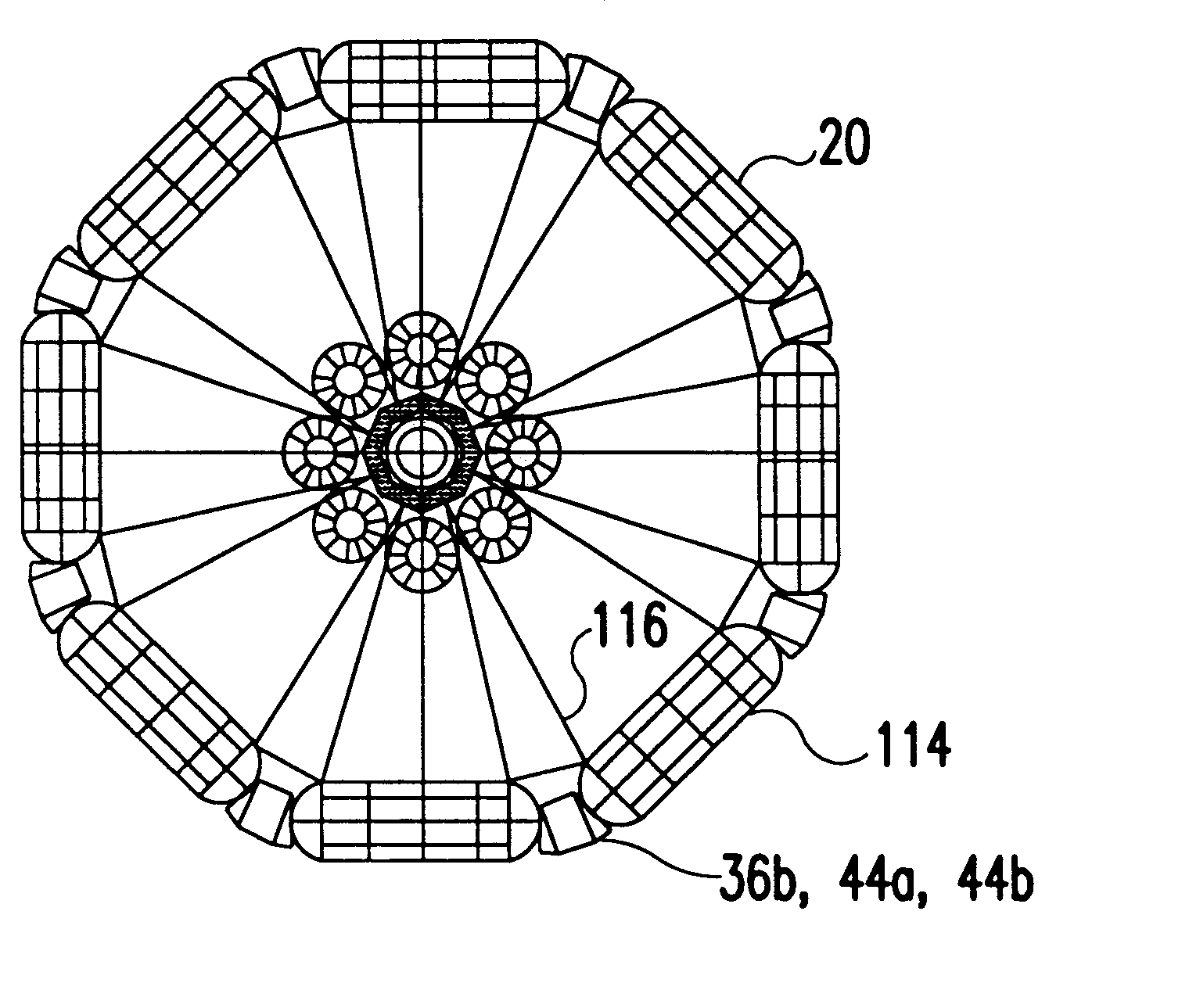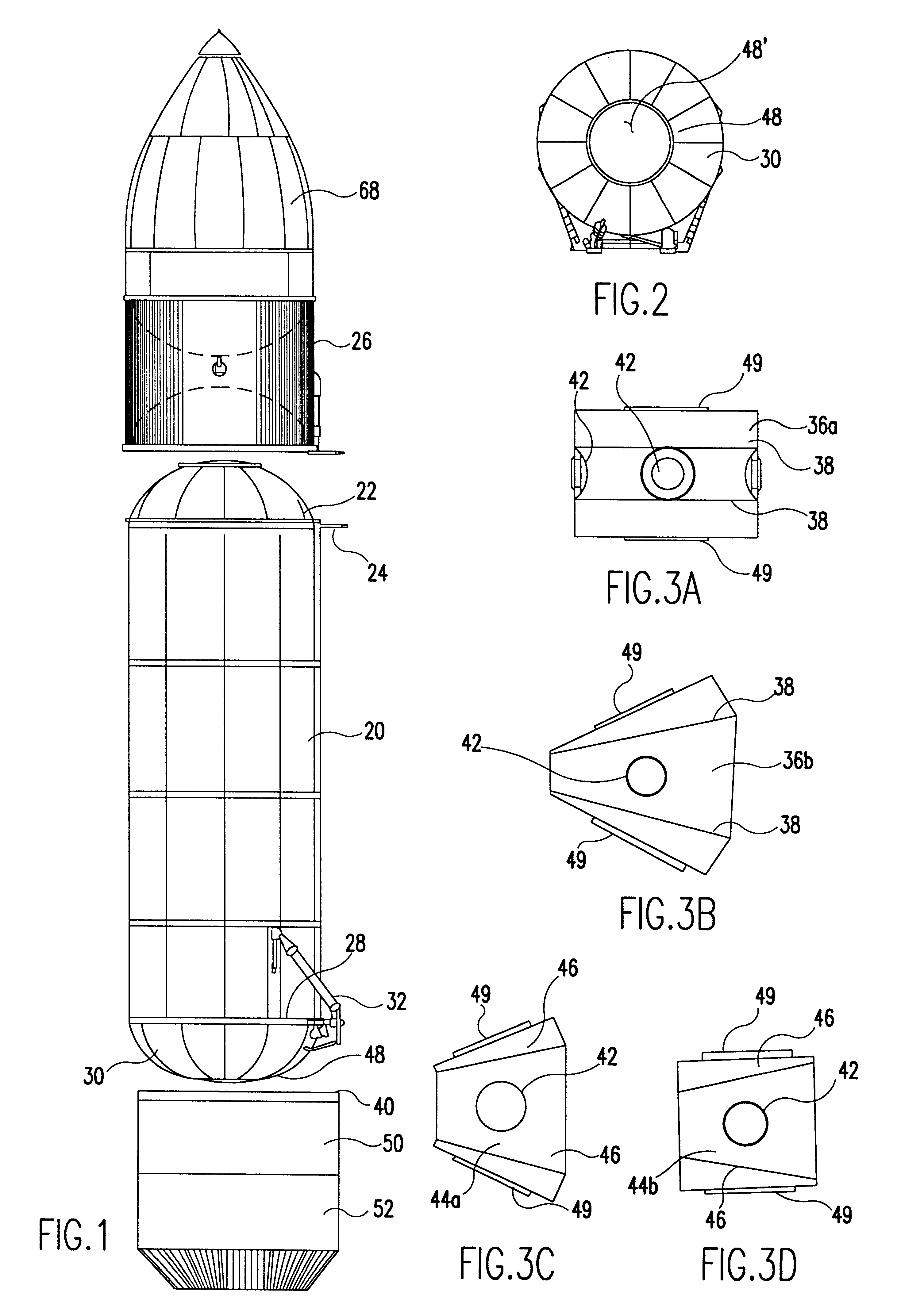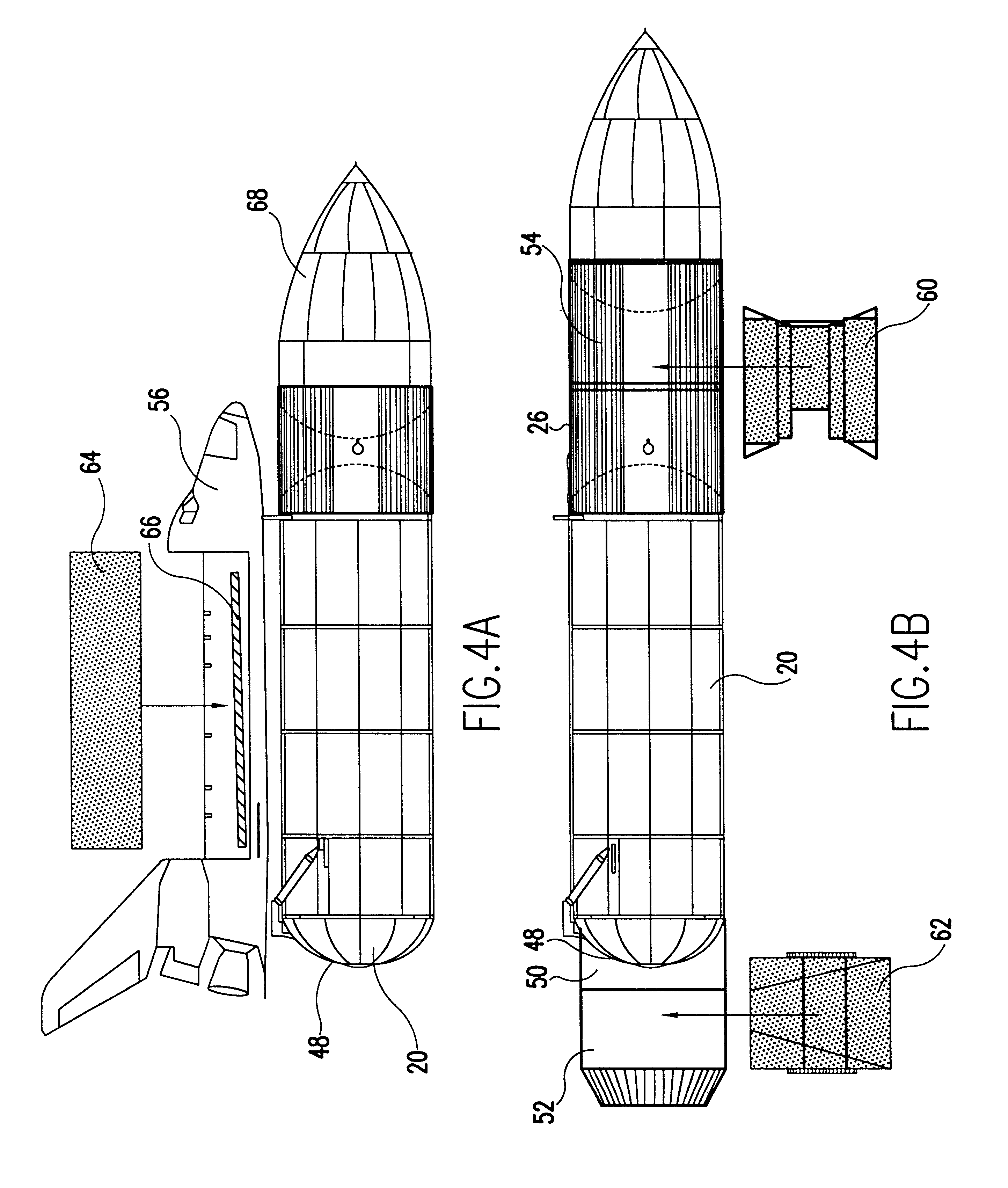Centrifugal gravity habitation torus constructed of salvaged orbital debris
a technology of orbital debris and centrifugal gravity, which is applied in the direction of cosmonautic vehicles, cosmonautic crew accomodations, transportation and packaging, etc., can solve the problems of eluded space launch industry passenger traffic, cost billions of dollars to construct and operate, and the cost of orbital transportation and the hardware required
- Summary
- Abstract
- Description
- Claims
- Application Information
AI Technical Summary
Benefits of technology
Problems solved by technology
Method used
Image
Examples
second embodiment
FIG. 6 is an perspective view of a torus ring connected by connection modules 44 to form a 300 foot diameter torus capable of rotating 2 revolutions per minute to provide 20 to 23% of normal Earth gravity to inhabitants inside the rotating torus.
The torus is set in motion by a set of small attitude control propulsion systems spaced 180 degrees apart from each other on the torus outer surface. Some natural rotation is expected in orbit along with a gravity gradient stability with the long axis pointing toward the center of the earth. The attitude control propulsion system is also capable of correcting the slight tendency of the torus to wobble, until counter-rotating torus units are able to work together. Rotation rates from about 1 rpm to about 3 rpm are within the structural capability of the torus and the human body's ability to adapt to the environment without some discomfort. At rotation rates much above 3 rpm, people would begin to notice a Coriolis effect and experience some d...
third embodiment
FIG. 7A shows a top view of a torus assembled from hydrogen tanks 20. A similar torus could be derived from other derelict launch debris. The hydrogen tanks 20 are converted and connected together in an eight ring torus made up from straight line segments 114 approximately 100 feet long. The straight line segments 114 are connected with connection modules 44a to form an approximately 300 foot diameter torus ring with approximately one half a million cubic feet inside, and capable of rotation at 2 rpm for a centrifugal force created artificial gravity. Critical connecting locations use large connection module 36a to perform a de-spin function to permit the transfer of passengers, a transition to the torus at the center of the torus, and other functions. Connector passengerways 100 connect the microgravity core to the simulated gravity (approximately 20% of normal Earth gravity) created in the torus as it rotates. Eight connector passengerways 100 connect the structural ring of eight ...
PUM
 Login to View More
Login to View More Abstract
Description
Claims
Application Information
 Login to View More
Login to View More - R&D
- Intellectual Property
- Life Sciences
- Materials
- Tech Scout
- Unparalleled Data Quality
- Higher Quality Content
- 60% Fewer Hallucinations
Browse by: Latest US Patents, China's latest patents, Technical Efficacy Thesaurus, Application Domain, Technology Topic, Popular Technical Reports.
© 2025 PatSnap. All rights reserved.Legal|Privacy policy|Modern Slavery Act Transparency Statement|Sitemap|About US| Contact US: help@patsnap.com



